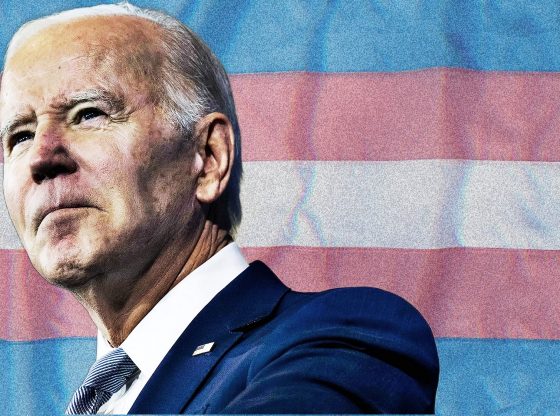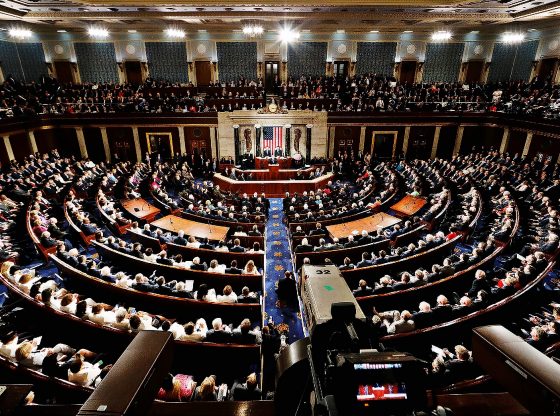President Biden Ends COVID-19 National Emergency: The Details
On Monday, President Joe Biden officially terminated the national emergency declaration regarding the COVID-19 pandemic. The national emergency had been in effect for three years, with federal and state governments initially enacting a two-week order to slow the spread of the virus. After the US House of Representatives passed the bill, Biden signed the resolution ending the orders, despite almost 200 House Democrats voting against it. The national emergency led to strict social distancing rules, closures of small businesses and schools, mask and vaccine mandates, and easily manipulated mail-in voting for the 2020 U.S. Presidential election.
In a short news release, the White House Said:
“The President signed into law: H.J.Res. 7, which terminates the national emergency related to the COVID-19 pandemic.”
The Biden Administration’s Plan to End the COVID-19 Emergency Declarations
The Biden administration’s plan to end the COVID-19 emergency declarations was also delayed, further compounding the pandemic’s effects. Many Americans perceived the administration’s decision to file another extension of the national and public health emergency declarations on April 11 as unnecessary, given the seemingly never-ending nature of the pandemic. The official end date was set for May 11, which further prolonged the burden on individuals and businesses already struggling to recover from the pandemic’s impact.
However, this plan was in response to two bills in the House of Representatives that would have ended the emergency declarations by force. The administration claimed that the legislation would “create wide-ranging chaos and uncertainty throughout the health care system.”
Implications of the New Law
The termination of the national emergency declaration has significant negative implications for many Americans. The new law ends federal health program waivers, including Medicare, Medicaid, and CHIP, even though health officials have relaxed many of the COVID-19 regulations. The Trump administration’s use of Title 42, which blocks illegal immigrants from crossing the southern border as a public health measure, and the pause on student loan repayments were also authorized under the declaration.
However, the Biden administration’s attempt to end the policy that allows border agents to turn migrants away on an expedited basis was unsuccessful due to the Supreme Court’s intervention. Despite the administration’s efforts to change the policy, the court’s decision has continued to allow border agents to turn migrants away on an expedited basis, leaving them with limited options.
Trump’s National Emergency Declaration
Former President Donald Trump was quick to respond to the pandemic by declaring a national emergency on March 13, 2020. This declaration allowed federal officials to provide funding for testing and vaccination centers in cities and states, which was crucial in the fight against the pandemic. Trump’s measures aimed to contain the spread of the virus and helped to minimize the negative impact on businesses and individuals across the country.
As a result, Trump’s proactive measures had significant positive effects, both medically and economically. In contrast, President Biden’s delayed response to ending the national emergency declaration regarding the COVID-19 pandemic has only added to the challenges faced by many Americans. The late implementation of the plan and the negative implications of the new law have further worsened the situation. Overall, Trump’s swift actions in response to the pandemic were essential in mitigating its effects, and his approach proved to be effective.
The Impact of COVID-19 Lockdowns on Individuals, Communities, and American Society
The COVID-19 pandemic and ensuing lockdowns have given rise to a range of challenges that have affected individuals, communities, and societies around the world. Among the most significant issues are the economic impacts, which have caused numerous businesses to shut down either temporarily or permanently, resulting in job losses, decreased income, and financial insecurity for families. Mental health problems are also a concern, with heightened levels of anxiety, depression, and other issues arising due to social isolation, uncertainty, and fear of the virus among many individuals. The closures of schools and universities have disrupted learning for millions of students worldwide, particularly those without access to the technology or resources necessary for remote learning. Additionally, the lockdowns have led to a surge in incidents of domestic violence, as victims are often confined at home with their abusers, while rates of drug and alcohol abuse have risen nationwide. Social distancing measures have resulted in social isolation and disconnection from communities for many individuals, including children, a situation that psychologists fear may have irreversible effects.
















IS IT really over, any loophole to restart?
Pedo Joe IS the emergency! He needs to go away to save the country
Not ended until the death jabs stop too